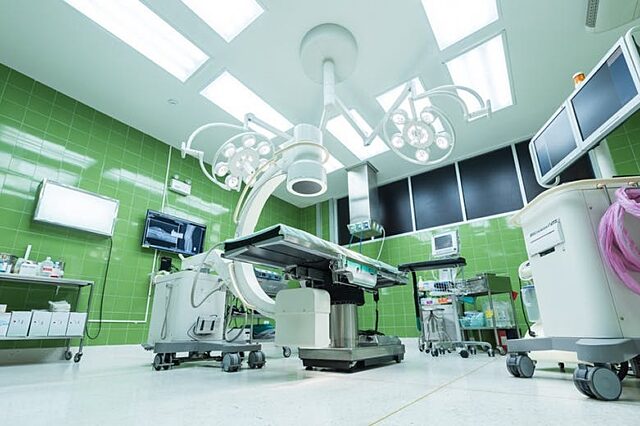CMN donates first mobile digital X-ray machine to NICU at UF Health Shands Children’s Hospital

In 2011, Kendall Lewis, best known as Miss K, was born with a disorder that affects multiple of her body systems called VACTERL Association. She spent 26 days in the Neonatal Intensive Care Unit (NICU) at University of Florida (UF) Health Shands Children’s Hospital. During her stay, Miss K had easily a dozen X-rays, said Mindy Lewis, her mother.
Mindy Lewis studied radiography for three semesters and was familiar with the dangers X-rays posed to her daughter. She knew radiation could cause problems such as cancer in the future, but Lewis said she did not have another option for her child.
Today, Lewis feels excited knowing an innovative form of X-ray technology is coming soon to the NICU. Children’s Miracle Network recently donated a Carestream DRX-Revolution Mobile X-ray Machine to the unit, said Nicole Cacho, M.D., an assistant professor of pediatrics in the UF College of Medicine.
The purchase of the machine, arriving in early April, was made possible by donations from Dance Marathon at UF. Since 1995, this student-led organization has raised more than $12.4 million for UF Health Shands Children’s Hospital, according to the Florida DM website.
Dance Marathon at UF is taking place Saturday and Sunday in the Exactech Arena at the Stephen C. O’Connell Center. Hundreds of students will stand or dance or otherwise stay vertical for 26.2 hours to raise money for the hospital, according to the Florida DM website.
The donations from DM at UF range from $10 tongue depressors to $250,000 extracorporeal membrane oxygenation machines to a recent $1 million NICU renovation, said Drew Carlton, DM at UF overall director. This donation is unique because of the technology it offers to patients.
The new X-ray machine uses portable digital technology to decrease the dose of radiation, expedite results and lower the chance of infection for neonates. In a unit where getting things done in a timely fashion is essential, this new machine should speed up care by about an hour in total, Cacho said.
A common X-ray for a neonate is taken during the placement of central lines, Cacho said. The best way to get fluids into these tiny patients is through these lines, she explained.
“In babies, peripheral intravenous lines go bad very quickly because their veins blow easily,’’ she said. “We put central lines into their umbilical cords called umbilical lines, which are semi-permanent.”
Cacho described the typical order of events for the placement of central lines: The person conducting the procedure places the line in the umbilical cord and has someone order an X-ray. “Sometimes we are just waiting around for 20 to 30 minutes for these X-ray machines,” she said.
After the X-ray is taken, radiologists bring the machine to a dock, generally on a different floor, and the X-ray is processed to see if the lines are in the right place. If the lines are off, the person conducting the procedure adjusts the lines until they sit in the right place. The X-ray process is repeated until the nurse can properly disperse the fluids and antibiotics.
“Delayed care for the baby is frustrating,” said Cacho. “The new [mobile digital X-ray] machine shows the images immediately, which cuts off time spent retaking images.”
The new X-ray machine will be solely used for the NICU unit, Cacho said. Extensive wait times will be diminished. Risk of infection and radiation dosage will decrease. Instant results will foster better patient care.
“Although the image loses a bit of quality, the user-friendly platform provided instant gratification and it is more compatible when sharing things,” said Lewis, who has worked with centers using the machine that were able to send the digital images through email instead of going through the process of filling out the paper work and sending the images back and forth.
A friend of the Lewis family who had multiple X-rays and computerized tomography, or CT, scans as a young child, recently was diagnosed with cancer. Doctors wonder whether the radiation she was exposed to early on in life was linked to this new diagnosis, Lewis said.
“Digital radiography as a whole is a beautiful thing,” Lewis said. She compared the technological advancement of X-rays to the advancement of cell phones. Lewis does not foresee traditional X-rays lasting much longer.
Carlton said the hospital tries to find new ways to connect with undergraduate students. “When you start making things tangible, that’s how you get responses,” he said. “This [machine] is the physical representation of [fundraisers] benefitting someone today, tomorrow and for years to come.”
Carlton and Lewis want those who donate to Dance Marathon at UF to understand the legacy they are leaving. “I want students to know that they are raising money for equipment their children and their children’s children might need,” Lewis said. “This machine,” Carlton said, “is just one example of showing the students exactly where their money is going.”